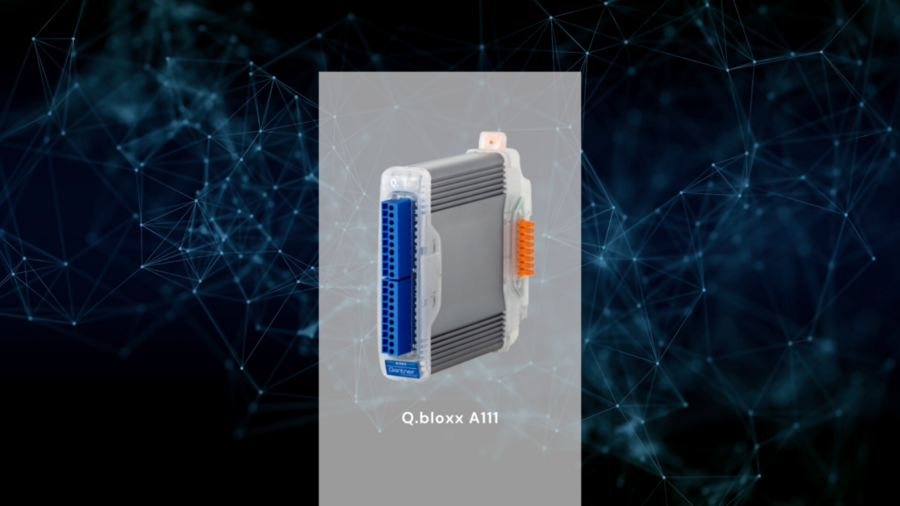The Key features:
- 4 galvanic isolated analog input channels
IEPE sensors/voltages - Fast high accuracy digitalization
24 bit ADC, 100 kHz sample rate per channel - Signal conditioning
16 virtual channels, linearization, digital filter, average, scaling, min/max storage, RMS, arithmetic, alarm - RS485 fieldbus interface
up to 48 Mbps: LocalBus up to 115.2 kbps: Modbus-RTU, ASCII - Connectable to any Test Controller
e.g. Q.station, Q.gate, or Q.pac - Galvanic isolation
channel to channel to power supply and to interface Isolation voltage 500 VDC - Electromagnetic Compatibility
according EN 61000-4 and EN 55011 - Power supply 10 to 30 VDC
- DIN rail mounting (EN 60715)
For more information about Q.bloxx A111 Measurement DAQ , click here: IEPE Sensor/Voltage Measurement DAQ A111
More articles
Career Fair Germany 2024
Join us on Tuesday, May 14, 2024, from 10 AM to 5 PM at the Meistersingerhalle, Nuremberg at the career fair. Visit our booth to explore a world of career opportunities in industrial measurement technology.
Read more...Instrumentation Live 2025, United Kingdom
GI Systems Ltd, representing Gantner Instruments, is excited to announce its participation in Instrumentation Live, scheduled for Wednesday, January 22nd, at the prestigious UK National Motorcycle Museum in Birmingham.
Read more...Precise Temperature Measurement with Pt100
Temperature measurement is one of our key competence areas. Here we maintain a position of global leadership. Our advanced 4-channel Q.bloxx A105 measurement module sets new standards in terms of stability and precision. For many different applications, the extremely precise and stable measurement of temperatures is an absolute prerequisite for the control of processes or the success of product innovations. In addition to the essential precision, particularly important aspects of this are the maintenance of stability when changes occur in the ambient temperature and ensuring long-term stability.
Read more...Long term Volcano Monitoring – A field study
Monitoring volcano activity is an important issue in the mitigation of natural hazards. Recently, most fatal issues occurred on volcanoes with low-energy and moderate activity, making them attractive touristic places (e.g., the 2014 Mount Ontake eruption in Japan). For these types of volcanoes, monitoring involves multiphysics measurements on dense networks. Distributed networks of sensors must be easily adapted to the volcano’s evolving state and the appearance of new active areas like fumaroles or high heat flux in the soil.
Read more...
